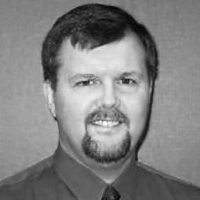Question
I have a patient who has tried a BICROS fitting in the past, but it was an unsatisfactory experience due to the cumbersome BTEs. The patient is willing to try another type of fitting. I am familiar with a TCROS (Transcranial CROS) fitting, which I know is theoretically for a dead ear with a normal ear, instead of a dead ear with a HI ear. However, is there any validity to fitting this patient with binaural CIC's under the same principal that a high power CIC in the dead ear will transfer to the better ear, which is also aided? He has a mild SNHL beginning at 3K in his better ear.Answer
I think there are two points to address in your question. The first point is the efficacy of a BiCROS versus a CROS fitting in this case. I am bringing up that point because a CROS fitting is the traditional approach for someone with normal hearing up to 3kHz and a mild hearing loss in the higher frequencies. In fact, people with a mild hearing loss in the better ear are typically better CROS candidates than those with completely normal hearing in the better ear. The mild loss in one ear coupled with the unusable hearing in the other creates substantial difficulties for audibility even in quiet. The small amount of high frequency amplification applied to the better ear yields additional benefit regardless of the side of the head from which the desired signal emanates. When the wearer has completely normal hearing, the mild high frequency gain provided by the hearing aid is added on top of an otherwise audible signal even when the speech is soft. For this reason a CROS fitting might be as well received as a BiCROS fitting, provided I am reading your description correctly.
Regarding the Transcranial approach, Paul Dybala the Editor at Audiology Online, unearthed a Primer on Transcranial CROS fittings that I wrote a few years ago and has made it available on Audiology Online (Hayes, 2001). It describes my observations on the fitting process in some detail. In that document, I believe I did mention a Transcranial BiCROS. However, I have never tried one myself and I am not convinced that it would work. The fact is, a transcranial CROS requires considerable power from the hearing instrument and a good mechanical connection to the temporal bone to work at all. Even under ideal circumstances the perception of the wearer is very subtle. In a successful fitting the wearer will inform you that they notice a difference but that it is very non-intrusive and normal sounding. This is wonderful for a CROS fitting. But once you add the gain of an instrument directly into the better ear it can overwhelm that subtle transmission of energy from the unaidable side of the head. For this reason it has been my opinion that adding the acoustic input from the second aid renders the benefit of the transcranial transmission unremarkable.
However, this case and new technologies do present an interesting alternative I have not previously considered. The peak energy of the transcranial transmission matches the resonant frequencies of the hearing aid receiver and the temporal bone. As you will see in the primer the data suggests that this will occur around 1.5 kHz - 2 kHz. There is often no useful energy transferred from the unaidable side in the higher frequencies, 3 kHz and up. However, your client has a hearing loss in precisely this range. Since writing the Primer (Hayes, 2001) we have seen an influx of open fitting hearing aids. These unobtrusive devices provide preferential amplification in the range above 2 kHz due to the amount of venting they provide and the use of a thin, high impedance tube. It might be possible to add an open fitted miniature BTE to a transcranial CIC fitting and benefit from both.
I realize the client had problems with the bulky BiCROS BTEs. However, some of that may have been due occlusion caused by the BiCROS earmold. Furthermore, a small 10a BTE with a slim tube is as unobtrusive as a CIC and may provide an acoustic advantage in this case. I hope some of this was helpful. You have provided me with food for thought as well. Good luck with your fitting.
Works Cited:
Hayes, D. (2001, January 17). You Want to Put That CIC Where?? A Primer on CROS Fittings Using CICs. Audiology Online, Article 1572 www.audiologyonline.com/articles/article_detail.asp?article_id=1572. Retrieved April 25, 2006 from the Article Archives on www.audiologyonline.com
Donald Hayes, Ph.D., is Director, Audiology at Unitron Hearing Ltd.
To visit the Unitron website, visit www.unitronhearing.us/.

